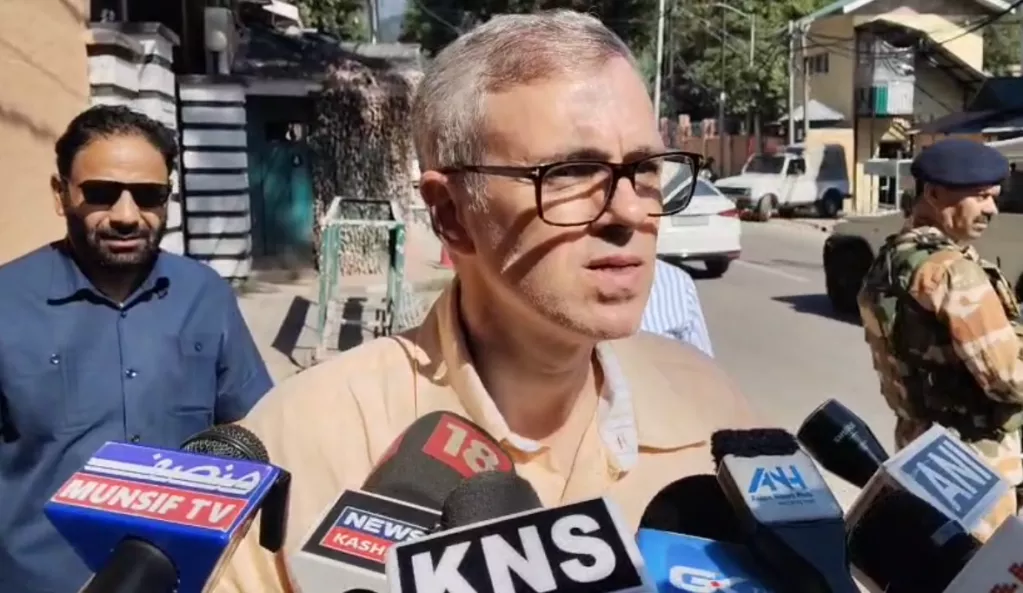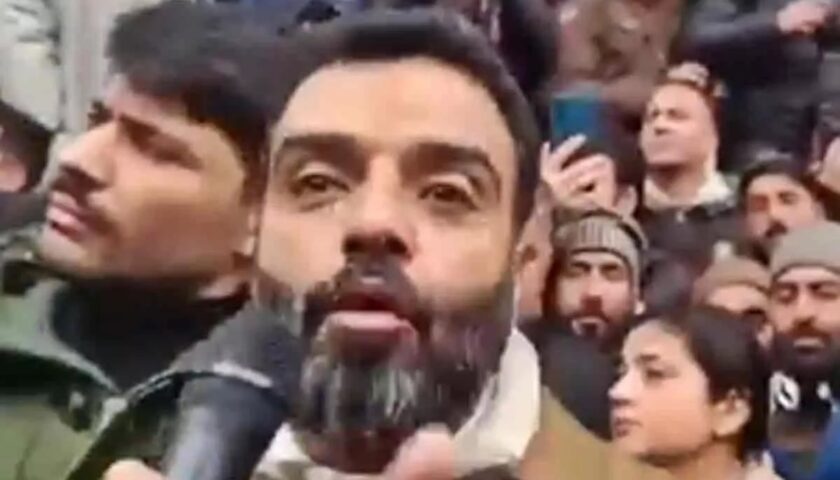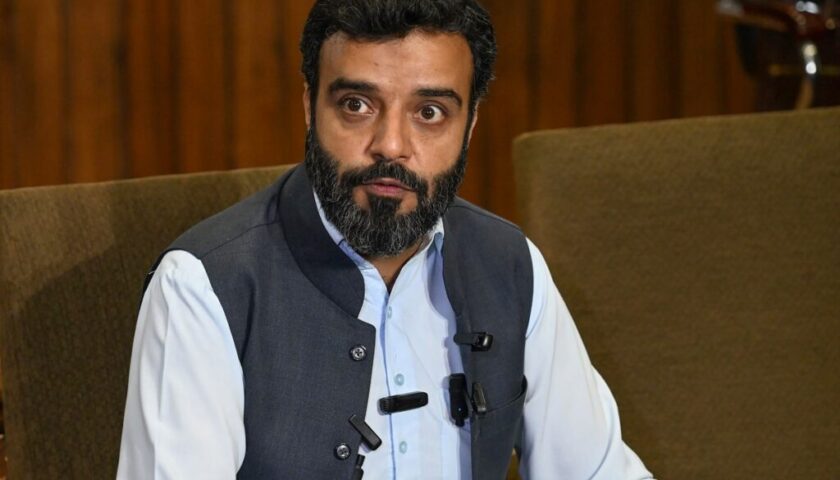Leh Violence an Eye-Opener on J&K’s Statehood Anguish, Says CM Omar
By: Javid Amin | 25 September 2025
Omar Abdullah’s Explosive Claim
Chief Minister Omar Abdullah has ignited a fresh political storm in Jammu & Kashmir by linking the delay in restoring statehood directly to the BJP’s failure to secure power in the region.
“As people didn’t form a BJP government, J&K hasn’t got statehood. That’s the reality,” Omar said during a press briefing in Srinagar.
His remarks come against the backdrop of the deadly Leh protests, where demands for statehood and Sixth Schedule protections spiraled into violence, leaving four people dead and over 100 injured.
Calling the Leh unrest a “wake-up call for Delhi”, Omar stressed that the political alienation in Ladakh mirrors the deep frustration within J&K itself.
“Leh’s violence is not isolated—it’s a mirror to our own anguish. People are tired of being ruled, not represented.”
A Brief Timeline: From Article 370 to Today
To understand Omar’s statement, one must revisit the trajectory of J&K politics since August 5, 2019, when the Centre revoked Article 370 and bifurcated the state into two Union Territories.
Key Milestones
-
2019: Article 370 abrogated, J&K downgraded to a UT. Centre promises restoration of statehood at an “appropriate time.”
-
2020–22: Repeated assurances in Parliament but no timelines shared.
-
2023: Delimitation exercise redraws electoral map, seen as favoring BJP.
-
2024: Assembly elections postponed citing security and weather; opposition accuses Centre of “governing by bureaucracy.”
-
2025: Leh protests erupt, and Omar Abdullah links statehood delay to BJP’s electoral weakness.
For many in Kashmir, the long wait for statehood feels less like a temporary measure and more like a political tool.
Political Undercurrents
Statehood Delay
While Union ministers including Amit Shah and Nitin Gadkari have reiterated the promise of restoration, no formal roadmap has been presented. This fuels suspicion that statehood is conditional — a reward for BJP dominance rather than a guaranteed right.
Selective Restoration?
Omar’s charge resonates widely: is Delhi using statehood as leverage? If BJP wins, the restoration arrives; if it doesn’t, the wait drags on. This perception has serious implications:
-
It undermines trust in the Centre’s word.
-
It frames democracy as transactional, not constitutional.
-
It reinforces a narrative of “rule, not representation.”
Leh’s Fallout
The Leh violence adds urgency to Omar’s claim. Ladakh, once hailed as the biggest beneficiary of bifurcation, now feels sidelined. The demand for Sixth Schedule rights shows fears of cultural and demographic erosion, echoing Kashmir’s own post-370 anxieties.
Public Sentiment on the Ground
Voices from the Valley
Local traders in Srinagar argue that the UT status has crippled decision-making, with every file routed to Delhi.
-
“We don’t want to be run by outsiders. Statehood is our dignity,” says a Srinagar lawyer.
Anger in Leh
Protesters in Leh accuse the Centre of ignoring local aspirations:
-
“We demanded Sixth Schedule for our tribes, but we got silence. Now they blame us for violence,” said a student leader.
Tribal Concerns
Gujjars and Bakarwals in J&K also fear that land rights and political safeguards are weaker under UT status.
Opposition and Civil Society Echoes
-
Mehbooba Mufti (PDP):
“Statehood is not a favor Delhi can gift. It’s our right. Stop dangling it like a carrot.” -
Congress Leaders in J&K:
Called Omar’s statement a “hard truth Delhi must face.” -
Academics & Rights Activists:
Warned that continued delays risk radicalizing youth, eroding faith in constitutional methods.
What the Opposition Demands
Following Omar’s salvo and Leh’s bloodshed, opposition parties and civil society are pressing for:
-
Immediate restoration of full statehood for J&K
-
Judicial probe into Leh’s September 24 violence
-
Transparent and time-bound roadmap for democratic revival
They argue that these steps are not just political, but existential for stability in J&K and Ladakh.
Centre’s Tightrope
The BJP-led government faces a dilemma:
-
Restoring statehood now could be seen as bowing to opposition pressure.
-
Delaying further risks more protests like Leh, feeding international criticism about India’s democratic credibility.
-
International optics: Erdogan’s recent UNGA remarks on Kashmir, and global attention to Ladakh protests, put Delhi under added scrutiny.
What Next? Scenarios for J&K
-
Early Restoration: Centre announces a timeline before 2026 elections to defuse anger.
-
Conditional Restoration: Statehood tied to future electoral outcomes, reinforcing Omar’s charge.
-
Prolonged Delay: Risks more unrest in Ladakh and J&K, with opposition uniting on “restore democracy” plank.
Bottom-Line: A Region at a Crossroads
Omar Abdullah’s statement is more than a political jab — it’s a diagnosis of a larger malaise. The idea that statehood is contingent on BJP’s rise in J&K strikes at the heart of democratic trust.
The Leh violence shows the cost of delay: frustration spilling into the streets, communities losing faith in peaceful dialogue, and the risk of alienation deepening.
For Delhi, the choice is stark:
Treat statehood as a bargaining chip and risk instability.
Or restore it as a constitutional right and rebuild trust.
The people of J&K and Ladakh wait — not for speeches, but for substance and statehood.




